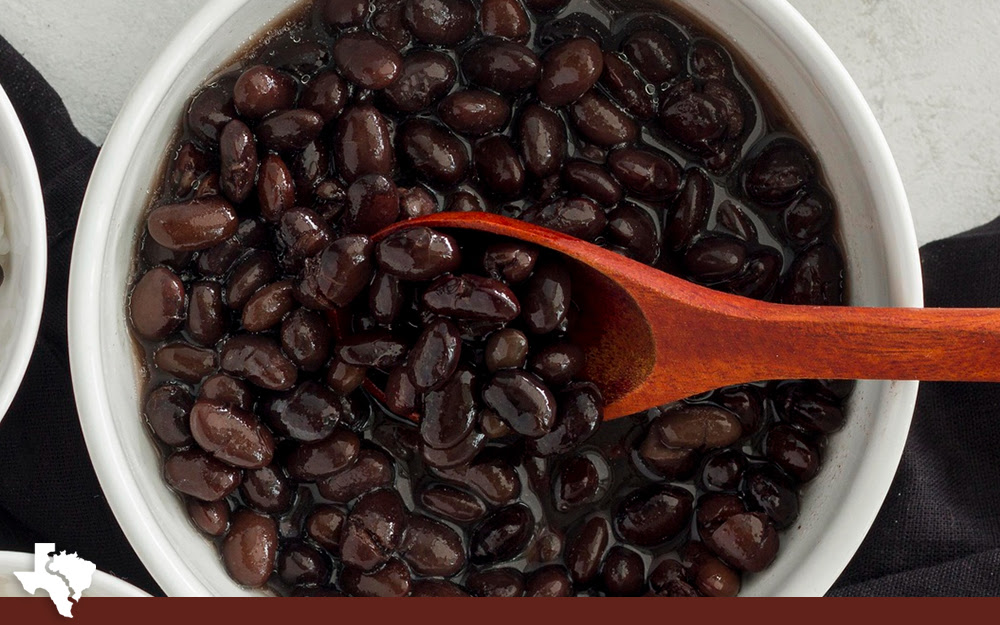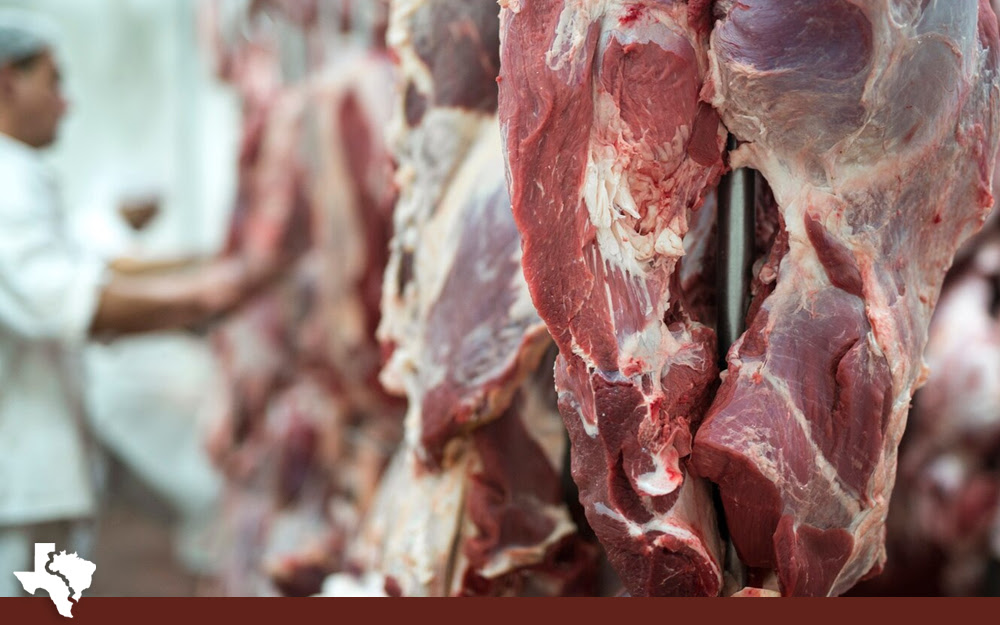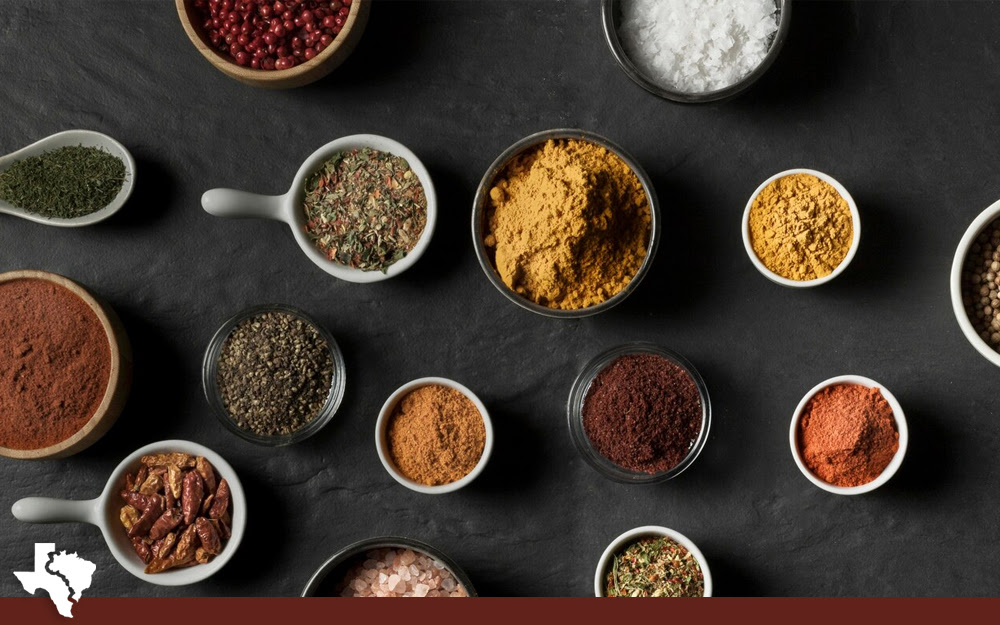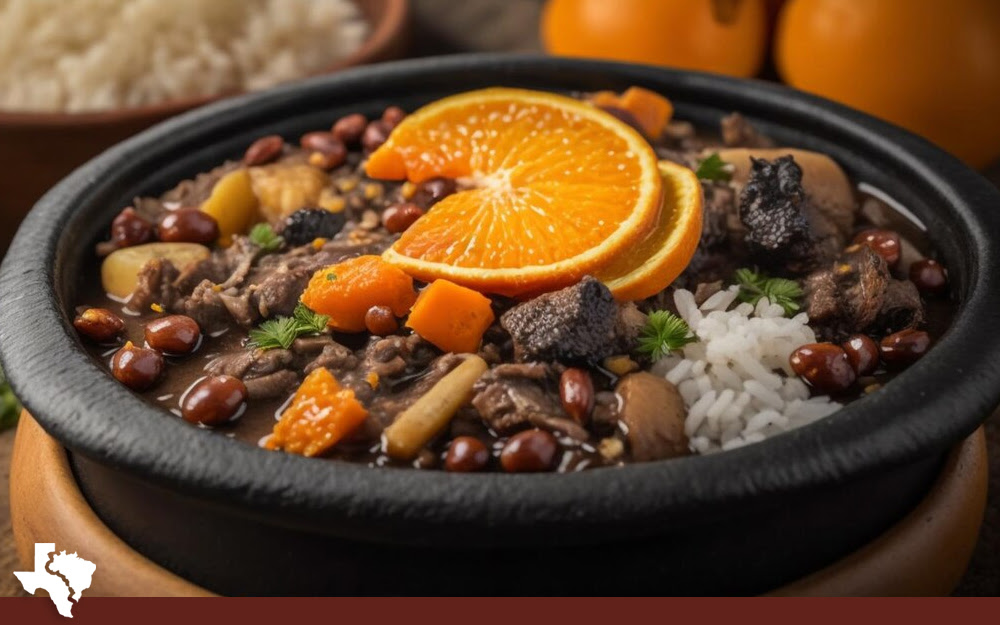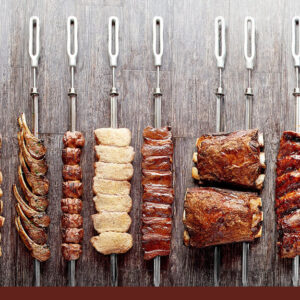Brazilian Food FAQ: What is Feijoada and How is it Made?
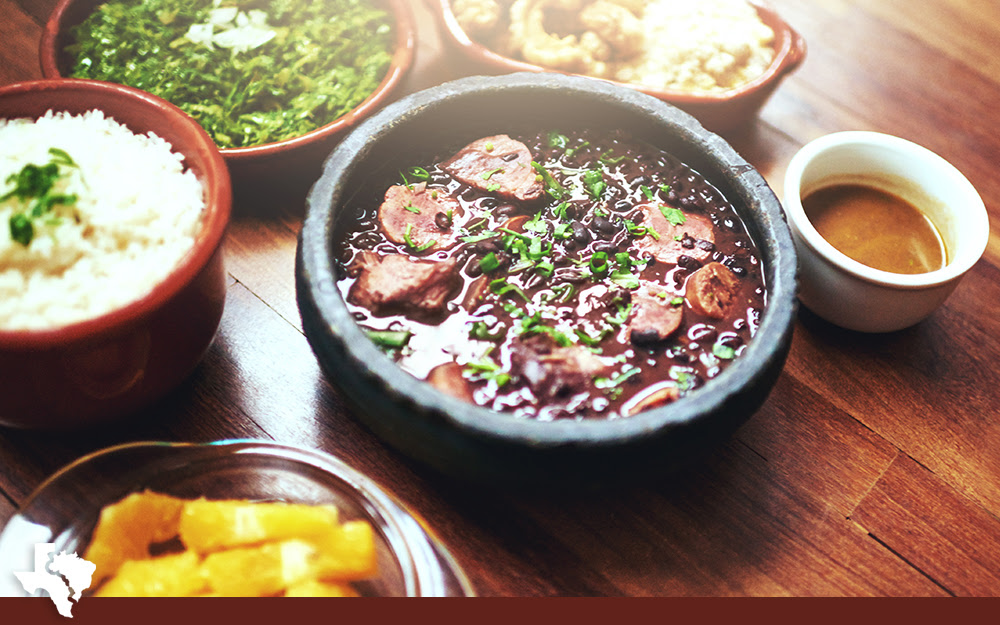
Brazil has a lot of unique foods across the country. Whether it’s foods made with their local cassava starch, or foods originating from the unique fusion of national cultures that settled Brazil centuries ago, there are many unique culinary experiences to be found there.
Few foods are so nationally famous and beloved as feijoada. This savory and delectable black bean stew is so prominent and so well-loved that it’s rightly called Brazil’s national dish.
So what is it, where does it come from, how is it made, and where can you find it? Let’s dig in!
Table of Contents
What is Feijoada?
Feijoada is a stew made primarily with black beans, and flavored with salted and smoked meats like pork and beef. Traditional feijoada tends to use cheaper cuts of meat, those not typically used for other dishes where the meat is more prominent, such as pigs ears, pigs feet, and beef tongue.
The stew, which is rich, smoky, and savory, is generally served over rice, and is frequently topped with toasted cassava flour, with a side of sauteed collard greens and kale, and usually some citrus like orange slices.
It’s a stick-to-your-ribs meal. It’s thick, it’s hearty, it’s warm, and it’s comforting. It’s the epitome of a comfort food, a hearty meal that serves to fuel life’s festivities. In fact, it’s an extremely common weekend dish, to the point that Brazil calls Saturdays the day of feijoada, in much the same way as Americans have Taco Tuesdays. Enjoy it as a hearty meal with friends and family to get the weekend ball rolling.
Feijoada can be found pretty much everywhere in Brazil, and it’s gradually expanding around the world. Here at Texas de Brazil, we’ve worked long and hard to develop an authentic Brazilian churrascaria experience to the United States, and that means one of the most common items in our hot bar is a delectable feijoada.
Where Does Feijoada Come From?
Brazil, of course!
Alright, well, as we all know, the rich history of food is never so simple. Brazil’s culinary influences come from many sources, including north African food culture and Portuguese influences. Feijoada as a word originates from feijao, the Portuguese word for beans. So, does it come from Portugal?
This is where history, cultural tradition, and mythology all clash. There’s no firm or well-proven origin for feijoada.
The most widely accepted origin for feijoada is that the slaves who worked on the sugarcane plantations in Brazil invented feijoada as a way to use off-cuts of meat like pig ears and feet, while stewing them with a hearty and filling – but cheap and widely available – protein source, the Brazilian black bean.
While this is a sensible and logical origin given our modern sensibilities, relatively recent scholarship is starting to rethink this origin. In particular, there’s a lot of evidence that Europeans at the time – including the Portuguese slave owners in Brazil – didn’t view things like pigs feet and ears as scrap or off-cuts; they were highly regarded in food culture at the time. Viewing them as scraps is a much more modern, and American-centric, viewpoint.
Additionally, feijoada has a lot of resemblance to certain European stews, including the Portuguese pork and bean cozido. At the same time, it doesn’t resemble the bean-based dishes common in northern Africa, where the slaves would have been from and whose food culture would have come with them.
More than likely, feijoada was local take on a European stew, and while slaves may have been the ones cooking it, it was their masters who likely ate it.
Of course, by now, it doesn’t really matter what the origin is; feijoada is uniquely Brazilian today, unlike nearly anything else in the world. So, how do you make it?
The Ingredients of Feijoada
Feijoada is a relatively simple stew, which means everything you put in it has a role to play, and the quality of the stew depends heavily on the quality of the ingredients. So, let’s go over those ingredients.
The Beans
The star of the show, the primary protein, and the main bulk of the color, texture, substance of the feijoada, is the Brazilian black beans. There’s nothing too special about black beans from Brazil – whatever black beans you find locally are likely the same kind of bean – but the most important element is how those beans are treated.
The key is to get dried beans and make sure to soak them overnight to soften them up before cooking. It’s also frequently recommended to take around a quarter of the beans you’ll use for a batch of feijoada and mash them up. This way you have a mixture of whole cooked beans and bean mash. The bean mash spreads around the stew and releases natural starches that help thicken, smooth, and bolden the stew.
You can use canned beans in a pinch, but your resulting stew won’t be as rich or as flavorful, and you’ll need to change up the proportions you use.
The Meats
A traditional feijoada is usually made of beef, pork, and sausage.
The beef is almost always – today, anyway – Brazilian carne seca, which is simply a salted beef that has been dried and preserved, almost but not quite like a jerky. It can also involve beef tongue, if you have it available to you.
Pork is usually in the form of “trotters” or pigs feet, as well as pigs ears. If you don’t like to cook with those kinds of cuts, you can also use a more modernized recipe, which usually calls for something more like smoked pork loin and bacon to add the rich fattiness, saltiness, and pork flavors to the dish.
Many feijoadas also use some kind of Brazilian sausage. There’s a Portuguese sausage called chourico, which is a sort of variation on the Spanish chorizo, which is commonly used to add a bit of spiciness to the stew. You can also use linguica, a Brazilian sausage.
Truthfully, nearly any combination of meats can be used, as long as you have the right flavor profiles. You want something with fat and connective tissue that can break down and add richness to the stew, and you want something smokey to add that smoked flavor to the beans. Since you’re generally going to remove the pigs feet, ears, and other inedible parts of the stew before serving, having some kind of meat that is still there to eat is also beneficial, though not technically necessary.
The Spices
Feijoada gets a lot of its flavor from the spices used to preserve the meats you use, but that doesn’t mean you need to cook it without other spices. In fact, the choice of spices you use is a pretty significant determining factor in the customization of the recipe.
Different families and individuals in Brazil and abroad have different spice mixtures and recommendations.
- Bay leaves. Bay is an interesting and subtle flavor that adds a kind of dark and herbal note to soups and stews. It’s one of those things you would miss if it wasn’t there, but you wouldn’t necessarily be able to pick it out without a trained culinary viewpoint.
- What would a stew be without garlic? Chopped garlic is a great addition to, quite honestly, nearly anything, so unless you’re allergic to alliums, don’t go light on the garlic.
- Using onion as a flavor base for any soup, stew, or meat-based dish is a no-brainer. It’s just such an incredible way to add flavor that you’re missing out if you leave it out.
- If you aren’t using a spiced sausage, a spice can add a pleasant heat and kick to the stew. Generally, you only need one or maybe two chilis for a pound of beans, and something like a serrano or habanero works great. These are optional; if you don’t like a spicy stew, or if you’re already using a spiced meat, you might not need or want them.
- A smoked paprika is a very important addition to a feijoada if you’re not using heavily smoked meats. The smoky flavor is one of the primary flavor elements of a good feijoada, and it needs to come from somewhere. Smoked meats do it, but if you don’t think it’s enough, smoked paprika does the trick.
Other spices may or may not be included depending on your personal preferences and the culinary tradition you’re following. We’ve seen recipes with coriander, cilantro, parsley, and other spices. These aren’t generally as traditional, but when you’re making a feijoada for yourself, feel free to customize it to your tastes and the tastes of your family.
Finally, of course, a little salt and pepper rounds out the flavors. Season to taste!
How to Make a Great Feijoada
Feijoada is a stew, which means it’s one of those dishes where you basically throw everything in a pot, put it over low heat, and let it go all day – if not longer. There’s a bit more nuance to it than that, though, so let’s discuss.
A traditional feijoada is made using a clay pot. IF you don’t have one – and most of us don’t, these days – a dutch oven or even a slow cooker can work. Any heavy-bottomed pot that controls heat well is all you need.
The first thing you need to do is get the beans soaking. Wash them and soak them for at least a day. Usually, you want to change the water 2-3 times in that day, too.
Soaking the meats along with the beans is commonly recommended if you’re using some of those tougher dried meats like carne seca and the dry sausages. This helps soften them, release the flavors, and most importantly, cuts down on the salt in those preserved meats.
The day you’re ready to make the feijoada, you want to take those soaked meats and boil them for 20 minutes. While that sounds like a lot, it’s another way to cut down on the salt content of the meat. Don’t boil the fresher meats, or you’ll lose all the flavor.
Now it’s time to make the stew. Put the beans, the meats – including your non-boiled, non-preserved meats – and your bay leaves and non-aromatics (that is, not the garlic and onions) to a pot and cover with water. Simmer them for at least 30 minutes, then add sausages and other ingredients and keep simmering.
Many traditional feijoadas have one more ingredient here: a whole orange, put in the pot with the initial simmer. Some people like the citrus undertones this adds, and some people believe it further helps draw away the salt from the dish. If you use an orange, or half an orange, remove and discard it when you add the spices.
At this point, you deal with the aromatics. Chop and saute the bacon, onion, and garlic until softened and add them to the mix. Take a ladle full of the beans and mash them (as we mentioned above) to release starch and thicken the stew.
A little bit more cooking and it’s ready to serve! Serve it with rice, suateed greens, and some toasted cassava flour if it’s available to you.
Stop By Texas de Brazil for Authentic Feijoada
If you can’t find all of the ingredients, or you just don’t have the tools, the space, or the time to make your own feijoada, why not swing by your local Texas de Brazil to give it a try there? As an authentic churrascaria, striving to provide a Brazilian dining experience to American (and global) audiences, we always have hot feijoada on the hot bar for you.
If you like the experience and want more, you can join our eclub for special deals, coupons, and other benefits. You can also call or reserve a space online, come in for group dining, or order catering for a larger event. So, what are you waiting for? Experience the Saturday of feijoada at Texas de Brazil!



